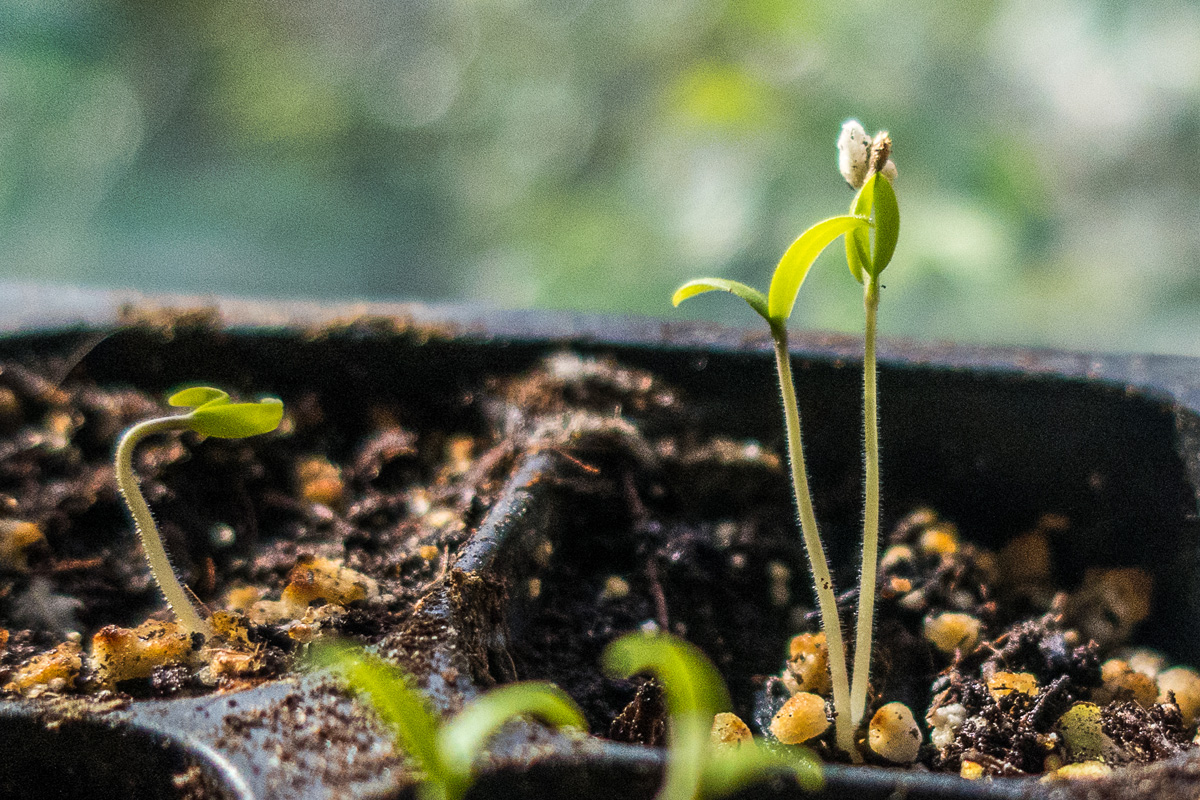5 Things Absolute Beginner Gardeners Should Know

Gardening is a huge subject, and the volumes of knowledge you can attain over time are immense. You can read, you can try and learn by your mistakes, and you can get advice. And, you can be totally overwhelmed by something as simple as figuring out when a tomato is ripe.
For those of you new to gardening, I want you to know that while wisdom will come with time, you can be a success if you just stick to some simple concepts.
All plants are not equal.
Yes, I know you want GROW ALL THE THINGS, but if you are just starting out, you should probably skip the finicky plants, or ones that require a lot of tending. Some plants just love to grow, and will be easy to sprout and keep alive until harvest. Some plants will wilt and whine and fail at the hint of a hot day. Many plants just DO NOT like our weather here in the Bay Area (depending on your microclimate).SOLUTION: Start with the easy plants.
A good start are the plants in my article 5 PLANTS TO GET THE MOST GARDENING BANG FOR YOUR BUCK. Others that thrive in most of the SF Bay Area include garlic, potatoes, parsnips, sweet peas, grapes, and berries.Every Season is Different.
Some years are colder, or drier, or more bug-ridden, meaning a plant that did great last year may be kind of pathetic this year. I had one year of giant cauliflower heads, and then the next year I got a few little weird ones. Nature is a fickle mistress, and this can be frustrating given the effort you’ve put into your garden.SOLUTION: Grow a variety of plants.
Don’t just grow tomatoes, or beans, even if you have different cultivars of each. Be sure to give yourself some backup plants, just in case there’s an issue. This will help you keep your interest up in the face of disaster. Don’t let your backyard crop become a dust bowl metaphor: diversify!Your Plants will Die.
Bugs, animals, weather, weeds, etc. will affect your plants. Even those tiny sprouts you were so excited about can succumb to evil snails or fastidious cats using your freshly-dug garden beds as litter boxes.SOLUTION: Learn to accept that some of your plants will die.
You don’t want to hear this, you want to rail against the dying of the light, but it’s the sad truth. The sooner you can see your limp, broken plants and say “that’s gardening,” the faster you can move on to helping keep your other plants alive. These experiences will also help you learn what works and doesn’t work in your garden. Losing so many of my plants to slugs and snails led me to create my slug force fields and now I (and my plants) suffer less. You will learn, too.You Don’t Need to Spend a Lot on Equipment.
Despite what Sunset Magazine or other ad-selling gardening media may say, gardening is about 90% soil, 5% seeds, and 5% equipment. A lot of what you need is also generally useful for around-the-house tasks anyway, so purchasing a bunch of specialized gear is a waste. Also, plants don’t care what you look like when you’re out in the garden.SOLUTION: Keep it simple and only buy what you need.
Gloves, a hand shovel, and a watering can may be enough if you’re keeping it small. A larger shovel and saddle hoe can help if your garden is a bit larger. You can wear old clothes and rain boots when it’s wet and messy. You can grow seedlings indoors in used yogurt containers with holes poked in the bottom. Old cardboard boxes make great weed barrier material.Container Gardening Works…Until it Doesn’t.
There are some really beautiful displays of container gardens out there on the internet. Such success! Upside-down tomatoes! Corn in a bucket! Lemons in a teapot! (just kidding) But seriously, unless we’re talking HUGE containers, most plants are going to be cramped and sad in containers. The upside-down tomatoes are especially depressing—I know those roots want to SPREAD. Your plants will be stunted and root-bound unless the roots have room to grow appropriate for their variety. Some plants can work, like strawberries and herbs, but the pots sold for them are not big enough. Also, Pro-tip: Any plant you buy in the store, you should expect to have to re-pot immediately.SOLUTION: Look at a resource like square foot gardening to see what kind of space your plants actually need, and only plant in containers that they will fit in.
You can go smaller if you don’t have the room, but you will not get the yields of a free-range plant. Or, go for herbs, small peppers, garlic, beans, and other plants that have a smaller root system, and be sure to keep them happily watered.
